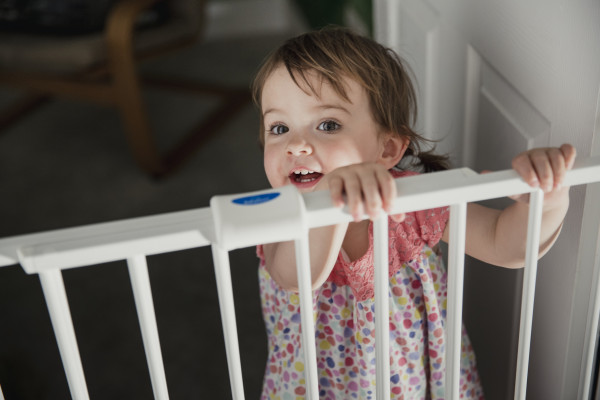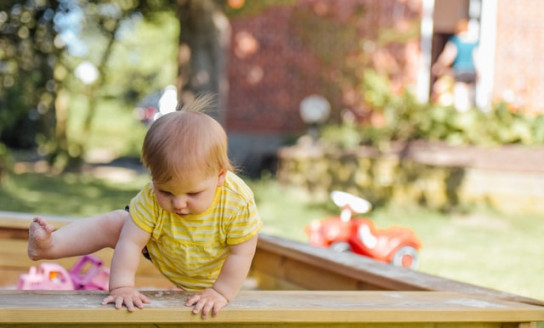Babies and falls
Babies develop skills overnight – one day they can’t roll and the next morning you find them on their tummy in their cot.
- It’s always safest to change baby on the floor.
- Never leave babies unattended on raised surfaces like change tables, sofas or beds. Babies might move and fall.
- If you do use a change table, always use the safety strap and keep a hand on baby at all times. This means you’ll need to have everything you need within easy reach, or take baby with you to get things.
As your child becomes more mobile – wriggling and rolling, crawling, and taking their first steps – it’s a good idea to observe the new places they can go and what they can reach and clamber on and over, and to adjust your home to help prevent them from hurting themselves.
Baby walkers aren’t recommended – they don’t help babies learn to walk, and can cause serious injuries.
A baby walker increases baby’s speed and mobility, which can put them in danger. For example, if a baby walker tips over, falls down stairs, or rolls against a hot oven, children can suffer head injuries, burns, or other serious injuries like fractures.
Toddlers, preschoolers and falls
Age one is the most injury-prone stage of a busy toddler’s life. They rush around on hands and knees or unsteady feet, they’re curious, and they want to touch and explore anything they can reach without understanding any of the dangers. That’s why it’s important for you to teach them what’s safe and unsafe, and to actively supervise them while they’re learning.
Stairs and balconies
- It’s a good idea to install safety gates at the top and bottom of stairs, and across the entries to balconies.
- When your child starts climbing, keep low furniture away from windows and install security latches or lock windows – especially upper storey windows – so they can’t be opened wide. This will stop your child from climbing out and falling.

Play equipment
- Actively supervise children when they’re on play equipment, at home and in playgrounds.
- Choose playgrounds with safe fall surfaces, and check for hazards like broken glass, rusted or broken equipment (report any hazards to your local Council).
- Make sure your children know it’s not safe to push, shove or crowd each other on play equipment.
- Make sure your child wears a helmet when riding a scooter, tricycle, bicycle, skateboard, rollerblades/in-line skates, rollerskates or other wheeled toys.
- Always check toys regularly for loose bits, sharp edges or any other hazards.
- Supervise children playing on a trampoline, and make sure they go on one at a time on a trampoline. Always use safety padding on the frame and springs. Make sure nothing is on, under or near the trampoline when it is in use.
Other tips
- Always use the safety harness when your child is in a high chair or stroller.
- Keep cot sides up to discourage your child from trying to climb.
- Keep other furniture away from bunk beds – they should only be used by children over nine
